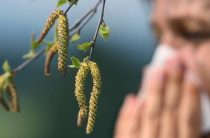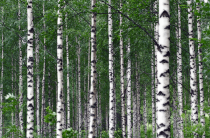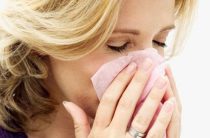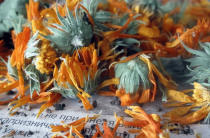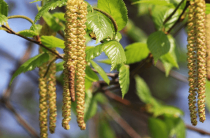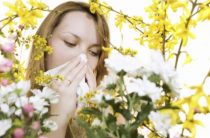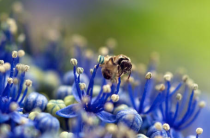At the present time, a large part of humanity has to deal with allergies. Often, an allergy to flowering occurs in people living in urban areas. According to long-term statistics, there are five patients per ten people. This reaction of the body is a seasonal phenomenon. Such a disease is most often hereditary, which serves as its negative feature.
An allergic reaction of any kind is a so-called response of the immune system to a particular allergen. The inflammatory process begins after allergens enter our body through the respiratory tract, while eating various foods or medicines. Often, the development of the disease can provoke contact of the allergen with the skin of a person.
Plants that cause an allergic reaction
Have you ever had to observe the manifestation of allergies at a certain time of the year, when, in fact, many plants begin to bloom? If yes, the doctor will confidently diagnose you: "Allergy to plant pollen." Among the main plants containing allergens in pollen, there are:
- maple;
- birch;
- linden;
- sagebrush;
- ambrosia.
Now consider the main periods during which a sick person may notice the manifestation of pronounced symptoms:
- from mid-July, almost until the end of autumn (late November), weeds bloom;
- grasses are pollinated from May to July;
- pollination of trees begins in March and ends in July.
Symptoms
Due to the seasonality of the disease, an allergy to flowering worries a person precisely during the period when the plant begins to bloom. In most cases, flowering lasts several weeks throughout the year, which is approximately two to five weeks. Often there are cases in which this type of allergy occurs simultaneously on the flowering of two or three plants. Then the treatment process becomes more complicated, there is a significant deterioration in well-being, the manifestation of symptoms intensifies, and the usual rhythm of life is disturbed.
This kind of reaction of the body is included in the category of respiratory allergic reactions, therefore, it has mostly respiratory symptoms. The main symptoms include:
- swelling of the nasal mucosa;
- redness of the skin;
- conjunctivitis;
- eye redness;
- general malaise;
- sneezing
- runny nose.
Allergy to flowering is also accompanied by:
- tearing;
- difficult breathing;
- deterioration of the sense of smell.
Note that often patients at the doctor's office complain of skin problems. They talk about the manifestation of a rash of various nature and forms. Rashes can affect individual small areas in a specific area, and also spread throughout the skin of the entire body. You need to know that there are often symptoms characteristic of an acute respiratory infection.
Therefore, a sick person may notice the following unpleasant symptoms, such as:
- body aches;
- temperature increase;
- fever, chills;
- sneezing.
Usually, in addition to the above symptoms, an allergic person has a runny nose, nasal congestion. That is why it is very easy to confuse allergies with SARS.
Other negative consequences
It is worth noting that this type of allergic reaction has negative consequences for the gastrointestinal tract, nervous system, and cardiovascular system. If the allergen, which is an integral component of pollen, enters the body through the respiratory tract, signs of bronchial asthma begin to appear. These include:
- wheezing during breathing;
- cough;
- shortness of breath
It becomes difficult for a person to breathe, since there is a significant narrowing of the vessels located in the bronchi. Usually, before asthmatic choking occurs, symptoms begin to appear abruptly, which quickly disappear. It's coughing, rash, sneezing. Quincke's edema, anaphylactic shock is a great danger to life. They are one of the severe manifestations of an allergic reaction, they need urgent help from doctors, proper therapy.
Why does an allergy to flowering occur?
The causes of the popular disease to date have not been precisely established. But important factors are known that have a negative infusion on people, lead to the development of an allergic reaction. It is heredity that plays the role of one of the main factors.
If this problem concerns the mother and father of the unborn baby, it is most likely that the baby will be born allergic. (Statistics say that this is possible in eight out of ten cases). If the future parents are healthy, according to statistics, the child will be born sick only in one out of ten cases.
At risk are:
- people living in areas with poor environmental conditions;
- those who often have to be nervous, succumb to stress;
- children who did not receive breast milk in infancy, instead of it, mothers fed babies with artificial mixtures.
An allergy to flowering can develop against the background of:
- malnutrition, including a large number of products containing preservatives, dyes, and other harmful additives;
- low physical activity, which leads to a weakening of the immune system;
- the use of perfumes, other household chemicals.
- smoking, infectious diseases.
How to be treated?
It is impossible to eliminate the cause of an allergy of any kind, so doctors recommend that patients be saved by various means to eliminate symptoms. Perhaps in the future, scientists will take a big step forward by inventing a technique that can completely cure allergies to pollen and other allergens. To recover as quickly as possible, it is worth getting rid of the source that provokes the disease.
If you are concerned about an allergy to the flowering of a particular plant, it is recommended to change your place of residence during the period of pollen activity. You need to settle in such climatic conditions where this allergen does not grow. Unfortunately, this possibility is very rare. For this reason, the doctor will advise the patient to isolate himself from the allergen. Among his recommendations are the following:
- installation of grids on windows with minimal gaps;
- wet cleaning.
It is best to go outside in the evening, remembering to wear respirators that are designed for people prone to pollen allergies.
Elimination of symptoms
For these purposes, corticosteroids, antihistamines are used. They help fight the unpleasant symptoms of allergies. Also, therapy consists in the appointment by doctors of various drugs that eliminate the manifestation of asthma, local drugs. These include ointments, eye drops, sprays.
Immunotherapy
A similar variant of therapy consists in the constant contact of a person with a substance that causes the development of an allergic reaction. Usually the allergen is administered in small doses. The patient has been in contact with him for several months, which makes it possible for a certain period to reduce sensitivity to the causative agent of pollen allergy.
Prevention
- Do not take walks in parks, in the forest.
- Follow a hypoallergenic diet.
- Give up smoking, drinking alcohol during the flowering period.
- Use air purifiers.
- After coming from the street, you need to wash your face with special hygiene products, having thoroughly washed your hands with soap in advance.
- It is better not to leave the house if it is too windy there. Remember, insufficient humidity levels can also easily provoke an allergy to pollen.
- You need to drink complexes containing vitamins and minerals.
It is worth carrying out wet cleaning daily, washing curtains, clothes more often, dusting the window sills, in fact, creating all the conditions to isolate yourself from such an ailment.
